Objectives
Elhuyar Fundazioa
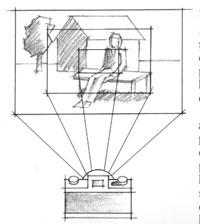
Recalling Article 2 of this Section, “the distance from the nodal point of the rear of the lens to the focal plane (ultimately to the film) is called focal length and the visual field of the lens depends on the focal length.”
If we have the possibility to change the lens (as we have in the SLR cameras), we can choose the area that the camera will receive from a specific point and the aspect that the image will have in the image.
In addition to the normal or standard 50 mm lens of 35 mm cameras seen so far, we have “large angles” of lower focal length and “telephoto lenses” of higher focus.
The 50mm lens adopts a 45º angle and has a similar perspective to that of the human eye. Large angles occupy a wider space than normal, but reproduce smaller objects. Telephoto lenses increase the size of the main subject but have a narrower pickup angle.
Just look at the image next door, with the camera at a fixed point, to realize that the part of the scene that takes each type of target depending on its angle of shot is different.
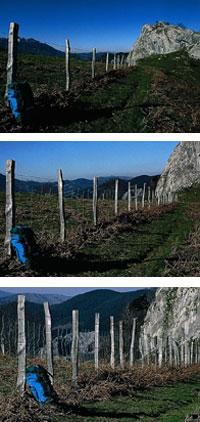
In addition, the change of objective (and distance to the subject) also implies a change of linear perspective and feeling of depth. Using short focus targets near the main subject, it represents a depth greater than the normal target: it reproduces much lower background elements; lines and planes converge clearly, increasing the sense of depth. On the contrary, long-focus lenses, placing the main subject further away from the same size, generate an opposite effect (see photos of the backpack).
However, what really influences the linear perspective is distance and not objective change. If we stay in the same place and only change the objectives or focal lengths, the three photographs would have the same perspective, changing only the part of the scene that had been considered at the beginning.
As for the depth of field, the smaller the length of the focus if the photos leave a certain aperture and the same place, the greater it will be. This is due, on the one hand, to the fact that this opening is smaller in the shorter objectives (the opening of the 135 mm f8 is 1/8 of 28 mm, e.g. ), and on the other, with smaller focus objectives, since, with greater refractive capacity, the elements of the foreground and the background focus closer.
Normal or standard target
Its catchment angle is 45º and is very similar to that of the human eye.
The standard target is determined by the format, which roughly matches the diagonal of the format. That is, the 35 mm format has a standard target of 50 mm, but the 6x6, for example, has 80 mm.
Although among beginners there is a tendency to discard this objective immediately, its focal length is very suitable to understand the basics of photographic technique.

It is useful for nature photography, wine cellar, architecture, etc. It is also suitable for taking the close-ups, which focuses up to 50 cm. It is more useful if you add approximation elements such as stretching tubes or bellows. In addition, it has great optical capabilities, whose design and structure is not as complex as that of others and has been for years a basic objective, so manufacturers have paid special attention to its improvement.
Large angles
They are less than 40 mm focal length and we can say that the most used are 28 and 35 mm. Those less than 14 mm are large special angles and cover a very wide field, so they are usually called “fish tanks”.
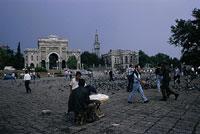
They allow to house a large part of the scene, so they are suitable for interiors of small space and for those who want to accommodate large exterior views. It allows a great approach, drastically increasing the foreground (and distorting it at times) and reducing and removing the elements from the background.
In the disadvantages there are optical distortions, although sometimes they are used to dramatize. These distortions increase as the focal length decreases. One of the advantages is the ability to not notice the movement of the camera at speeds lower than normal.
Telephoto lenses
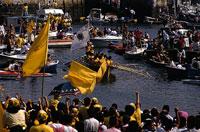
In a 35 mm format, from 75 mm to 3000 mm, we can say that the most used are between 100 and 500 mm.
Without approaching, it reduces the distance between subject and camera.
Ideal for sports, actions, animals and portrait photography, even when there is no possibility to approach and we do not want the subject to photograph to be aware.
Its catchment angle is narrow and increases and isolates the foreground, decreasing the sense of depth.
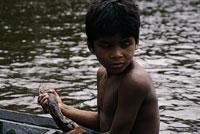
If it is a large telephoto lens (over 200 mm), it is recommended to use a similar sturdy tripod or stand. As a rule, it is not advisable to use speeds below the length of the focus we are using, such as 135 mm, with speeds below 1/125.
In addition, they are not very bright. The older they are, the smaller the maximum aperture, making their focus difficult. Telephoto lenses are designed according to two main models. Some are formed by lenses (like all other lenses) and others, called catadioptics, which are replaced by mirrors. Therefore, catadioptics are usually shorter, lighter and cheaper, but their optical quality is lower and they also have a fixed diaphragm.
ZOOM targets

They are variable focal length objectives. This feature requires a complex optical structure to keep the focus and aperture constant. However, the optical advance has experienced large margins, improvements and in recent years the prejudice of the loss of quality and brightness of the zoom is being ruled out.
The most used in the 35 mm format are those that occupy a distance of between 28 and 300 mm of long foci (28-80, 35-75, 75-210 or 73-300 mm, for example), allowing to fill with one or two objectives the area from wide angle to short telephoto lens.
Since fewer lenses can cover a wide range of focal lengths and the goal of changing the focus length is not so frequent, because of these amenities, in recent years they have extended a lot and the cameras, instead of selling together with the normal target, begin to sell with zoom, usually 28-80 or 35-75 mm.





